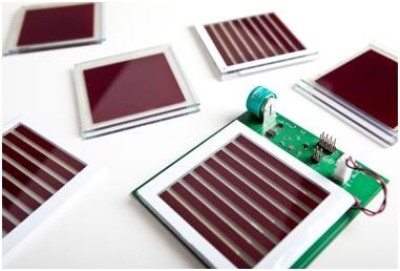SolarPrint, a developer of printable solar cell and indoor energy harvesting technology, has announced that the company will be highlighting its self powered wireless CO2, temperature and humidity sensor at the European Energy Harvesting & Storage Exhibition being held on 15-16 May, 2012, in Berlin.

Self Powered Wireless CO2, Temperature and Humidity Sensor
SolarPrint has collaborated with Gas Sensing Solutions Limited (GSS) and Analog Devices Incorporated (ADI) in development of the sensor. SolarPrint has provided its Dye Sensitised Solar cell (DSSC) technology, while GSS has provided its COZIR technology-based low-power CO2 sensors. ADI has contributed efficient, long-range and wireless networking technology.
SolarPrint's novel technology provides the capability for tuning solar cells to increase and maximize their performance under indoor lighting conditions. Even under low indoor lighting conditions they can provide 40% additional power.
The CO2, temperature and humidity sensor solution features CO2 air quality sensors, and thermostats and sensors for recognizing the presence of occupants in a room. It includes wireless networks that are maintenance-free and cost-effective. They possess increased reliability that provides better flexibility in utilizing the sensors.
Business Development Director and Co Founder of SolarPrint, Roy Horgan, states that the lack of awareness and knowledge about the interaction between individual components in a wireless sensor in the various stages of operation from supply of energy to operation of the sensor element has been criticized. The company provides a systems solution that addresses storage elements and power management of the self powered wireless CO2, temperature and humidity sensor.
Disclaimer: The views expressed here are those of the author expressed in their private capacity and do not necessarily represent the views of AZoM.com Limited T/A AZoNetwork the owner and operator of this website. This disclaimer forms part of the Terms and conditions of use of this website.